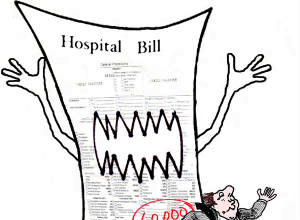 Reaching Across The Aisle – in Healthcare?
Reaching Across The Aisle – in Healthcare?
We hear a lot about bi-partisanship in politics – but what about healthcare?
 Reaching Across The Aisle – in Healthcare?
Reaching Across The Aisle – in Healthcare?
We hear a lot about bi-partisanship in politics – but what about healthcare? Sometimes it seems like the payers and the providers, the administrative and the clinical, are across the aisle from one another in more ways than one, and it brings to mind the challenges faced by politicians who just can’t see from the other side’s perspective.
While politics shoulders many competing agendas, when it comes to healthcare the bottom line is the same no matter where you are: good health for the best price. This is even true of the patient’s themselves, who are becoming more and more concerned with the cost of the services they receive – and using the internet to find out if there’s a better “bargain” on care somewhere else.
Agreement in Process Between Providers & Payers
For payers and providers, there has to be not just an agreement in ideals, but an agreement in process. This can be difficult to fathom when you remember that while the bottom line might be the same for everyone, the specific needs of providers, who work in a largely clinical (though, increasingly administrative) setting, are often at odds with what’s needed by those in the financial sector.
There’s a lot of talk between these two groups, but not much true communication or collaboration. Not unlike the awkward first-date, neither side knows what to do, exactly, but they aren’t totally shying away from the interaction either! To address this impasse, key stakeholders in electronic medical records are hustling to please both parties, in hopes that through the use of EMRs they’ll be well on their way to a solution.
EMRs will help to aid transparency between healthcare professionals and patients, too, which is the major buzzword of the minute when we’re talking about healthcare reform.
What Does Transparency Really Mean?
What does it mean to be transparent? For payors and providers, it means being clear and consistent about goals, needs and expectations. It also means everyone involved has to own up and take charge when something’s not working and be willing to come together to find a solution – without placing blame. For payers to understand what needs to be done, they need to understand the clinical challenges providers face. Likewise, providers need to understand what expectations are upon those in the payment sector. It requires transparency on both sides, because providers need to be open about what goals they aren’t meeting regarding their patients, and payers need to remain open about compensation and coverage, especially when it comes to Medicare/Medicaid.
In the same manner that physicians have all the clinical data, payers have the ability to provide longitudinal analytics regarding financial data and costs, and examining these ratios will give providers keen insight into performance.
Bundled Payments, DRGs and Risk
The concept of bundled payments has contributed to important risk shift within the industry with the help of DRGs (diagnosis related groups). Bundling services originally began with acute inpatient care – where the risk moved from the payer (Medicare) to the hospitals themselves. Accountable care grew from this seed of – well, accountability – within the healthcare industry.
Chronic, Progressive Conditions Complicate Bundled Care
It would be the easiest on everyone if each patient could just stick to having one condition, but as we know that isn’t usually how it pans out. Many patients not only have chronic conditions, they have multiple co-morbid chronic conditions. Since a single patient may need various bundled services over time, depending on where within an illness or condition they are on a spectrum of care needs, the burden of organizing is left mostly up to the providers – and then the payers will compensate accordingly (or, if they’ve decided not to cover certain services, they may not).
The way services are bundled isn’t always in relation to the patient’s condition, but sometimes has more to do with the setting which is required for services, or the timing or chronology of services that need to take place. When the latter is used, it can be difficult (with conditions that are chronic and progressive) to determine cost efficiency when the treatment can be, essentially, indefinite.
Providers Shouldering More of the Risk Under ACA
Just as physicians consider risk when they make treatment decisions with their patients, payers too need to consider risk adjustment as well. Understanding the relationship between the nuances in care delivery and cost, they can project out how costs will rise and prepare accordingly.
Providers are taking on more risk than they’ve had in the past when it comes to quality, cost and efficiency of care, the basis of the Affordable Care Act. But they can’t do it alone, and while healthcare organizations may be looking to shift risk, they’ve got to be mindful to not also shift blame.










